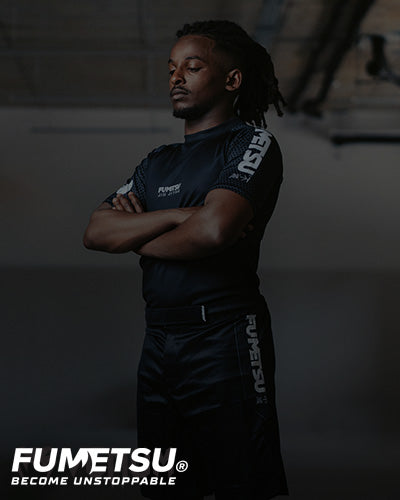Table of content
We're back with another discussion about comparing martial arts, a topic that often sparks lively debates about the strengths and differences of various disciplines.
Today, we're focusing on Judo vs. Jiu-Jitsu. Both of these grappling arts have deep-rooted histories and emphasise throws, submissions, and ground techniques.
Despite their similarities, each offers its own unique approach and benefits.
Let’s take a closer look at these two captivating martial arts and see how they compare.
"Judo teaches you how to overcome obstacles, both on and off the mat."
Origins and Philosophies
Judo Origins
Let's start with the origins. Judo was created in Japan by Jigoro Kano in 1882.
The core idea behind Judo is using an opponent's energy against them, which makes for efficient and effective throws and pins.
Judo focuses on standing techniques, especially throws. The principle of off-balancing an opponent, known as Kazushi, is key.
While Judo also includes ne-waza (ground techniques) for pinning and submissions, these are not as heavily focused on as they are in Jiu-Jitsu.
For those looking to train in Judo, consider checking out our White Bytomic Red Label Adult Judo Uniform.
Jiu-Jitsu Origins
Jiu-Jitsu, particularly Brazilian Jiu-Jitsu (BJJ), focuses more on ground fighting. It was brought to prominence by the Gracie family in Brazil in the early 20th century.
Practitioners of BJJ are adept in a range of techniques including submissions, chokes, and joint locks.
In contrast to Judo, Jiu-Jitsu matches typically involve a lot of ground fighting. The aim is to secure a dominant position and force an opponent to submit. This focus on grappling and position control makes Jiu-Jitsu particularly effective for self-defense, teaching practitioners to handle threats from larger or stronger opponents.
Techniques and Training
Judo Techniques
Judo training is divided between tachi-waza (standing techniques) and ne-waza (ground techniques). Standing techniques include a variety of throws, such as ippon seoi nage (one-arm shoulder throw) and osoto gari (large outer reap).
Ground techniques in Judo are generally focused on pinning the opponent rather than submitting them.
Key training elements in Judo include:
Kazushi: Breaking the opponent's balance.
Takedowns: Executing throws to take the opponent to the ground.
Pinning: Holding the opponent on the ground for a set period to score points.

Jiu-Jitsu Techniques
Techniques like the rear-naked choke, armbar, and triangle choke are staples in a practitioner's arsenal. The art also covers positional strategies, such as maintaining guard and passing it to achieve a dominant position.
Key training elements in Jiu-Jitsu include:
Guard: Defending from the bottom and setting up submissions or sweeps.
Submissions: Techniques to force an opponent to tap out.
Positional control: Gaining and maintaining dominant positions.

Scoring and Competition
Judo in Competition
In Judo, scoring is straightforward. An ippon (full point) is awarded for a perfect throw or a 20-second pin, which ends the match.
Lesser scores, waza-ari and yuko, are given for throws or pins that are less dominant. Matches typically last five minutes for adults, with a focus on dynamic action and throws.
Penalties are given for passivity or breaking the rules, encouraging active engagement and fair play.
Jiu-Jitsu in Competition
Jiu-Jitsu competitions are scored based on positional control and successful submissions. Points are awarded for takedowns, achieving dominant positions like mount or back control, and passing the guard.
Submissions are the ultimate goal, ending the match when an opponent taps out.
Matches vary in duration but usually range from five to ten minutes, depending on the level of competition.
Penalties are also given in BJJ for stalling and illegal techniques, ensuring matches remain active and engaging - something we love to see!
For those interested in Jiu-Jitsu, browse our BJJ Gis collection to find the right gear for your training.
Practical Applications and Self-Defense
Judo for Self-Defence
Of course, we talked a lot about the offensive side of these martial arts. Let's talk about something just as important: defense!
Judo is a very potent tool for self-defense because it is deeply based on throws and takedowns.
It can off-balance an opponent and then execute a throw that can neutralise the threat at hand. The principles of leverage and momentum also allow smaller practitioners to effectively defend themselves against larger opponents.
Jiu-Jitsu for Self-Defence
Known for its effectiveness in practical self-defence.
BJJ teaches techniques for getting out from under the opponent, for establishing dominant positions, and for applying submissions.
The ability to focus on control and submissions, without causing significant injury, is another reason Jiu-Jitsu remains a preferred choice for many in law enforcement and the military.
An aggressor can be totally brought down without ever having to hit them with techniques such as the rear-naked choke or an arm bar.
Training with the proper equipment is crucial for safety and performance. Explore our BJJ No-Gi Gear to find the best options for your training sessions.
Judo: Belt Sytem
Judo is one of the Olympic program sports—a sport in which athletes compete within weight categories, demonstrating their ability in throwing and pinning.
The belt ranks, from white to black, symbolise the practitioner's journey and growth in the art.
Jiu-Jitsu: Belt Sytem
Matches can be fought in both gi and no-gi formats, and both formats have their own sets of challenges and strategies.
The BJJ belt ranking is very strict and sometimes can even take years to go from one rank to another, reflecting the determination and the level of skill in a person.


Fitness and Well-being
Another aspect of the Judo vs Jiu-Jitsu debate is comparing their fitness requirements.
Both demand peak physical condition, especially for elite athletes. But what sets their fitness levels apart?
Benefits of Judo Fitness
Judo is a fantastic full-body workout that boosts your cardiovascular health, builds strength, and increases flexibility.
The quick throws and movements really help improve your agility and coordination. Plus, Judo isn't just great for your body; it's also great for your mind.
It can help you stay focused, disciplined, and reduce stress. Overall, it's a well-rounded activity that benefits both your physical and mental health.
Benefits of Jiu-Jitsu Fitness
Jiu-Jitsu provides impressive fitness benefits, emphasising functional strength, endurance, and flexibility.
The continuous use of muscles during grappling and ground techniques builds core strength and enhances overall physical fitness.
Likewise to Judo, Jiu-Jitsu isn't just about physical prowess; it also sharpens your mind, helping you develop problem-solving skills, reduce stress, and boost your confidence.
Judo vs Jiu-Jitsu: Which One to Choose?
Choosing between Judo and Jiu-Jitsu ultimately comes down to your personal goals and preferences.
If you love powerful throws and dynamic standing techniques, Judo might be the best fit for you.
On the other hand, if you’re drawn to ground fighting and submissions, Jiu-Jitsu offers a thorough and strategic approach to grappling.
It’s especially great for those interested in effective self-defence techniques and who enjoy continuous learning through live sparring.
However, many people find that learning both can provide a well-rounded skill set, combining the strengths of each discipline for a more comprehensive martial arts experience. To get started, explore our range of BJJ Gis!







